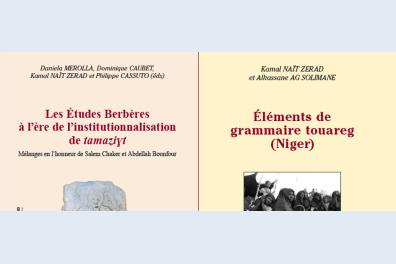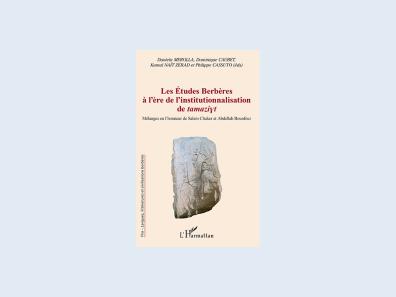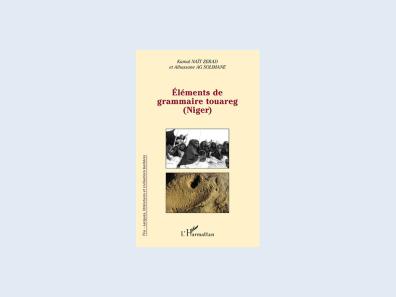Book releases (2021)

Les Études Berbères à l'ère de l'institutionnalisation de tamaziɣt
Mélanges en l'honneur de Salem Chaker et Abdellah Bounfour
Daniela Merolla, Dominique Caubet, Kamal Naït Zerad et Philippe Cassuto (éds)
Editions L'Harmattan, Collection " Tira-Langues Littératures et civilisations berbères ", July 2021
This book is a collection of articles on the current state of Berberizing research as much as a message of deep respect and friendship towards Salem Chaker and Abdellah Bounfour, two intellectuals who left an indelible mark on Berber studies in the phase of post-colonial maturity and the historic passage of the recognition of Amazigh as an official and national language in Algeria, Morocco and more recently Libya.
Both of them, one in 2018 and the other in 2016, retired as university professors after long years of intense and friendly collaboration. After ten years spent together at the Institut national des langues et civilisations orientales (INALCO), in the period 1998-2008, the synergy of research interests and disciplinary fields thus developed also continued when, in 2008, Salem Chaker joined the Université de Provence and the Institut de Recherches et d'Études sur les Mondes Arabes et Musulmans (IREMAM).

Eléments de grammaire touareg (Niger)
Kamal Nait Zerad, Alhassane Ag Solimane
Editions L'Harmattan, Collection " Tira-Langues Littératures et civilisations berbères ", May 2021
This book presents the basic elements of Tuareg grammar. It was difficult to find a grammar accessible in French or English: those published to date have been much more "linguistically" oriented than pedagogically descriptive, which reduces their readability, even for an informed public, including students.
The notation used in this book is based on that proposed following the international workshop held at Inalco in 1996. The aim is not to propose a writing standard (in Latin characters) for Tuareg, but to establish a practical orthography that will make it easier to approach this language.
The book takes up the description model used by K. Naït Zerad's grammars of Kabyle, Rifain and Chleuh. First, a detailed study of nominal and then verbal morphologies, followed by elements of syntax. In the appendix, comparative data between certain Tuareg languages are presented, as well as additional elements on lexicon formation.
